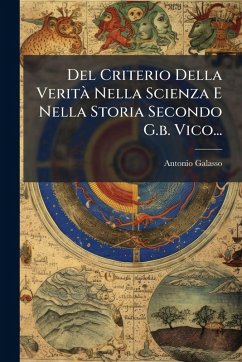This book delves into the criteria of truth in science and history according to Giambattista Vico, as interpreted by Antonio Galasso. It explores Vico's innovative approach to understanding historical and scientific knowledge, examining his challenges to traditional epistemological frameworks. The work analyzes Vico's contributions to the philosophy of history, focusing on his ideas regarding the cyclical nature of civilizations and the importance of understanding human culture. Galasso's interpretation provides a valuable perspective on Vico's continuing relevance to contemporary debates about truth, knowledge, and the relationship between science and the humanities. A significant resource for scholars of philosophy, history, and Italian intellectual history. This work has been selected by scholars as being culturally important, and is part of the knowledge base of civilization as we know it. This work was reproduced from the original artifact, and remains as true to the original work as possible. Therefore, you will see the original copyright references, library stamps (as most of these works have been housed in our most important libraries around the world), and other notations in the work. This work is in the public domain in the United States of America, and possibly other nations. Within the United States, you may freely copy and distribute this work, as no entity (individual or corporate) has a copyright on the body of the work. As a reproduction of a historical artifact, this work may contain missing or blurred pages, poor pictures, errant marks, etc. Scholars believe, and we concur, that this work is important enough to be preserved, reproduced, and made generally available to the public. We appreciate your support of the preservation process, and thank you for being an important part of keeping this knowledge alive and relevant.
Bitte wählen Sie Ihr Anliegen aus.
Rechnungen
Retourenschein anfordern
Bestellstatus
Storno

